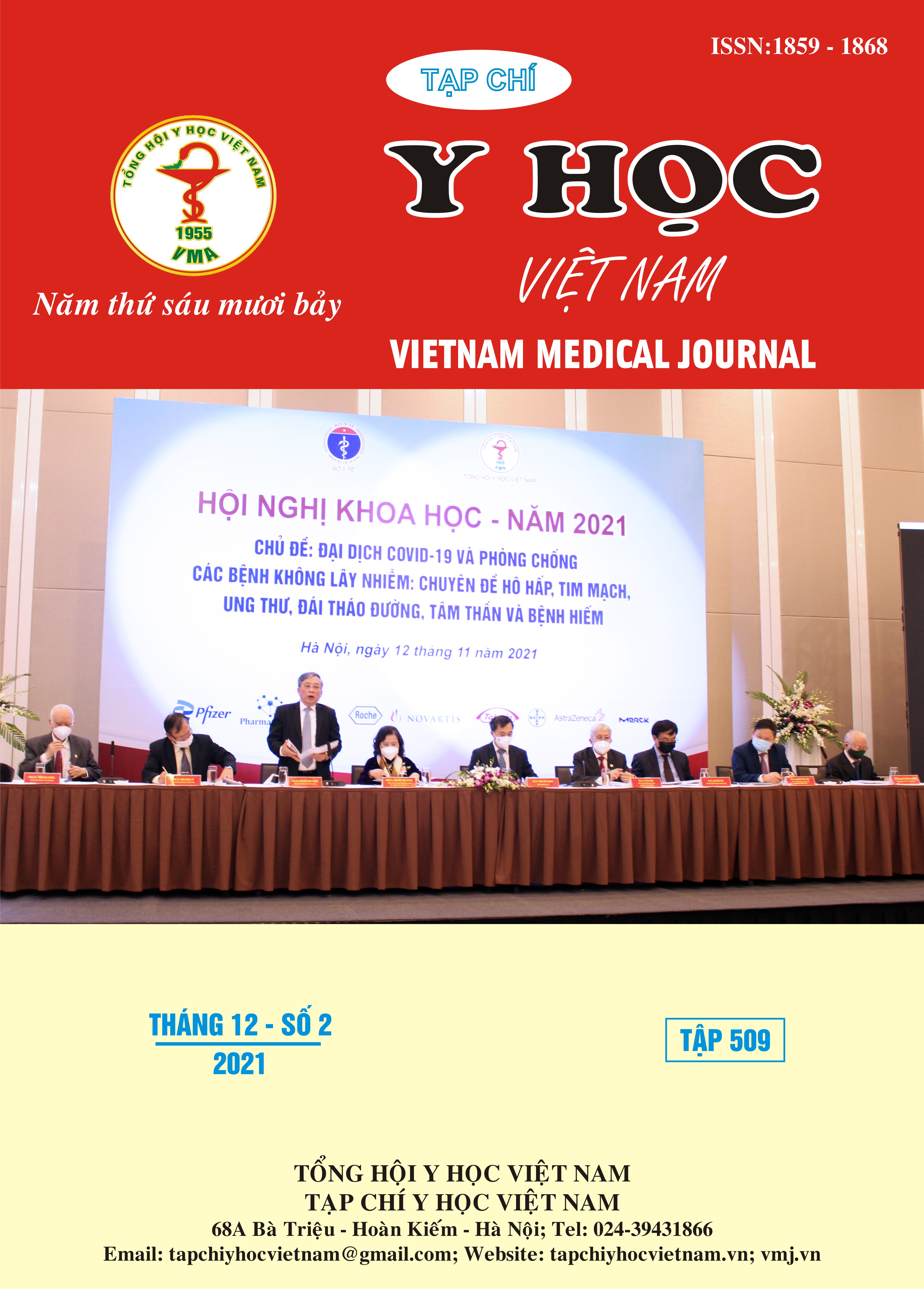CORRELATION BETWEEN PLASMA CONCENTRATIONS OF DOPAMINE AND SOME CLINICAL PARAMETERS IN PATIENTS WITH MAJOR DEPRESSIVE DISORDER
Main Article Content
Abstract
Objective: To investigate the correlation between plasma concentrations of Dopamine and some clinical parameters in patients with major depressive disorder. Subjects and Methods: Descriptive cross-sectional study in a patient group of 62 inpatients with major depression treated at the Department of Psychiatry, Military Hospital 103. A control group consisted of 31 healthy participants whose sex and age were similar to the group of patients. Results: The proportion of male subjects was higher than that of female ones, but the difference was not statistically significant. The mean ages in the patients and the controls were 38.76±13.20 and 39.71±14.27, respectively; the gap was still insignificant, with p>0.05. The mean concentrations of Plasma Dopamine in the group of patients was (24.96±12.55 pg/ml) lower than the figure for the group of controls (28.72±11.95 pg/ml); However, the disparity was not statistically considerable, with p>0.05. Dopamine levels in plasma in the subjects (both the patient group and the control group) insignificantly differed by sex and age. The depressed patients with psychotic features had lower levels of plasma Dopamine than the patients without psychosis; the difference was not statistically significant (18.26±13.32 pg/ml and 25.68±12.38 pg/ml, with p>0.05). There was no correlation between plasma concentrations of Dopamine and Beck depression inventory scores. Conclusion: The study showed the concentrations of Plasma Dopamine in depressed patients changed insignificantly to the figures for the controls. Furthermore, the Dopamine levels in plasma in the depressed patients did not depend on sex, age, psychotic features, and Beck depression inventory scores.
Article Details
Keywords
plasma concentrations of Dopamine, major depressive disorder
References
2. Gotlib I.H, Hammen C.L, Handbook of Depression, New York, (2009), 187-218.
3. Belujon P., Grace A. A. ,"Dopamine System Dysregulation in Major Depressive Disorders", Int J Neuropsychopharmacol, (2017), 20(12), 1036-1046.
4. Wyatt R. J., Portnoy B., Kupfer D. J. et al., "Resting plasma catecholamine concentrations in patients with depression and anxiety", Arch Gen Psychiatry, (1971), 24(1), 65-70.
5. Mazure C. M., Bowers M. B., Jr., Hoffman F., Jr. et al, "Plasma catecholamine metabolites in subtypes of major depression", Biol Psychiatry, (1987), 22(12), 1469-72.
6. Devanand D. P., Bowers M. B., Jr., Hoffman F. J., Jr. et al, "Elevated plasma homovanillic acid in depressed females with melancholia and psychosis", Psychiatry Res, (1985), 15(1), 1-4.
7. Hamner M. B., Diamond B. I., "Plasma dopamine and norepinephrine correlations with psychomotor retardation, anxiety, and depression in non-psychotic depressed patients: a pilot study", Psychiatry Res, (1996), 64(3), 209-11.
8. Kendler K. S., Heninger G. R., Roth R. H., "Influence of dopamine agonists on plasma and brain levels of homovanillic acid", Life Sci, (1982), 30(24), 2063-9.


